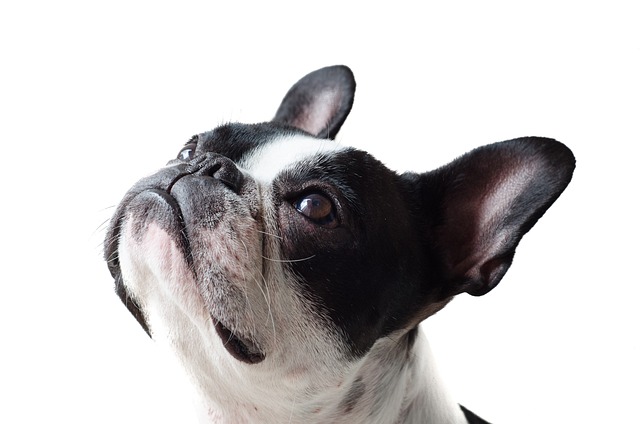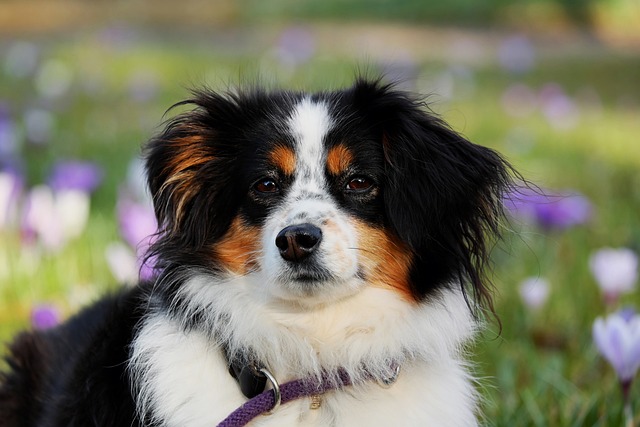Whether you’re a first-time puppy owner or a seasoned dog enthusiast, navigating the “fear period” in your puppy’s development can be a daunting task. This crucial stage, often occurring between 8 and 14 weeks of age, can greatly impact their future behavior and overall well-being. In this article, we will explore what the “fear period” is, why it happens, and provide practical tips and strategies to help you handle it with confidence.

Understanding the Puppy Fear Period
What is the Puppy Fear Period?
The puppy fear period is a critical stage in a young dog’s development where they may exhibit heightened fear and anxiety. It is a normal part of their growth and can occur anytime between the ages of 8 and 14 weeks. During this period, puppies may become more sensitive to unfamiliar people, objects, noises, and environments. It is important for puppy owners to recognize the fear period and take appropriate steps to help their furry friend navigate through this challenging phase.
When does the Fear Period Occur?
The fear period can occur at any time during the crucial socialization period of a puppy’s life, typically between 8 to 14 weeks of age. It is essential to note that each pup is unique, and the duration of this phase can vary. Some puppies may experience a shorter fear period, while others may have a more prolonged period of heightened fearfulness. Understanding when this phase occurs enables owners to be proactive in supporting their puppy’s emotional well-being.
Signs and Symptoms of the Fear Period
During the fear period, you may observe various signs and symptoms in your puppy that indicate their heightened anxiety and fear. These signs can include increased shyness, avoidance behaviors, excessive barking or whining, trembling, cowering, or seeking constant reassurance. Puppies may also display fear-related behaviors such as jumping or lunging away from certain stimuli, hiding, or even showing signs of aggression. It is crucial to be vigilant and recognize these signs to provide the necessary support during this sensitive stage of their development.
Causes of Fear Period
Understanding the causes of the fear period can help puppy owners better navigate their furry friend’s emotional journey. The fear period is a natural part of a puppy’s development, often resulting from a combination of genetic predispositions, environmental influences, and previous experiences. Factors such as genetics, lack of early socialization, traumatic events, or even certain medical conditions can contribute to the intensity of the fear period. By identifying potential causes, you can tailor your approach to help your puppy overcome their fears and build resilience.
Preparing for the Fear Period
Preparing for the fear period is an essential aspect of ensuring your puppy’s emotional well-being during this challenging phase. By implementing the following strategies, you can help your furry friend navigate through this stage with greater ease:
Importance of Early Socialization
Begin socializing your puppy at an early age to introduce them to various people, animals, environments, and experiences. Positive interactions and exposure to different stimuli will support your puppy in developing confidence and a balanced temperament. Enroll in puppy socialization classes and seek opportunities for safe and controlled interactions to provide your puppy with positive social experiences.
Positive Reinforcement Training
Utilize positive reinforcement training methods to build trust, encourage desired behaviors, and reinforce positive associations. Reward your puppy with treats, praise, and playtime when they exhibit calm and confident behavior. This approach fosters mutual understanding and strengthens the bond between you and your four-legged companion.
Expose Your Puppy to Various Stimuli
Gradually introduce your puppy to different sights, sounds, smells, and textures. Exposing them to a wide range of stimuli in a controlled and positive manner will help desensitize them to potential triggers. Start with mild exposure and gradually increase the intensity as your puppy becomes more comfortable and confident.
Building Trust and Confidence
Create a nurturing and supportive environment for your puppy. Spend quality time together, engage in interactive play, and establish a routine to build a sense of security and predictability. Consistency and patience will go a long way in strengthening your puppy’s trust and overall confidence.
Handling a Puppy in Fear Period
During the fear period, it is crucial to handle your puppy with care and compassion. By following these guidelines, you can provide a safe and comforting environment for your furry friend:
Stay Calm and Patient
Your puppy looks to you for guidance and reassurance, especially during times of heightened fear. Remain calm and composed, as your emotional state can influence your pup’s behavior. Display patience and understanding, and avoid getting frustrated or impatient, as this can exacerbate their anxiety.
Avoid Forceful or Punitive Techniques
Using forceful or punitive training methods during the fear period can have detrimental effects on your puppy’s emotional well-being. Avoid any form of physical punishment, yelling, or scolding, as this can intensify their fear and erode trust. Instead, opt for positive reinforcement techniques to encourage desired behaviors.
Create a Safe and Comforting Environment
Your puppy’s environment should be a safe haven where they can retreat during moments of fear or anxiety. Set up a comfortable and secure den-like space where your puppy can relax and feel protected. Provide them with soft bedding, toys, and a quiet area away from loud noises or excessive stimulation.
Gradual Exposure to Potential Triggers
Expose your puppy to potential triggers or stimuli that elicit fear in a controlled and gradual manner. Start with small doses and assess your puppy’s comfort level before proceeding. With time, your puppy will learn to associate these once-frightening stimuli with positive experiences, gradually reducing their fear response.
Socialization Strategies during the Fear Period
Socialization plays a crucial role in helping your puppy overcome their fears and establish positive associations. Implement the following strategies to aid in their development:
Introducing Your Puppy to New People
Expose your puppy to a variety of individuals, including men, women, children, and individuals of different ethnicities and ages.

Introduction to Other Animals
Provide opportunities for your puppy to interact and socialize with friendly, well-behaved animals. Start with controlled introductions in a neutral environment, such as a park or a friend’s backyard. Monitor their interactions closely, ensuring that they are positive and free from fear or aggression.
Exposing Your Puppy to Different Environments
Gradually expose your puppy to different environments, such as parks, beaches, busy streets, or shopping centers. Start with quieter locations and gradually introduce them to more challenging environments.

Positive Experiences with Everyday Objects
Help your puppy become comfortable with everyday objects and situations that may trigger fear. This can include desensitizing them to loud noises, such as vacuum cleaners or fireworks, by playing recordings at a low volume and gradually increasing it. Offer treats and praise when they exhibit calm behavior in the presence of these stimuli.
Helping Your Puppy Overcome Fears
When faced with a fearful situation, there are various strategies you can employ to help your puppy overcome their fears:
Professional Guidance
If you find that your puppy’s fears are interfering with their daily life or if their fear response is intense and difficult to manage, consider seeking professional guidance. A professional dog trainer or behaviorist can offer expert advice tailored to your puppy’s specific needs, helping you address their fears in a safe and effective manner.
Desensitization and Counterconditioning
Desensitization involves gradually exposing your puppy to their fear triggers in a controlled and positive manner. Counterconditioning focuses on changing their emotional response to these triggers by associating them with positive experiences, such as treats, play, or praise. These techniques, when applied with patience and consistency, can make a significant difference in helping your puppy overcome their fears.
Gradual Approach to Fearful Situations
When faced with a situation that triggers fear in your puppy, take a gradual approach. Start at a distance from the stimulus where your puppy feels comfortable and gradually decrease the distance over time. This gradual exposure, combined with positive reinforcement, enables your puppy to build resilience and face their fears at their own pace.
Reinforcing Positive Associations
Whenever your puppy exhibits calm or confiden


